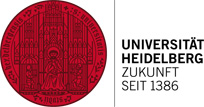How a Developmental Gene Controls Feeding Behaviour
15 January 2016

Photo: COS
In experiments on the fruit fly model organism Drosophila melanogaster, Heidelberg University biologists gained new insight into how feeding behaviour is encoded and controlled. The research team led by Prof. Dr. Ingrid Lohmann of the Centre for Organismal Studies (COS) studied the function of a special developmental gene of the Hox gene family. This gene is essential for maintaining a motor unit in the fly’s head that consists of a muscle and the stimulating neurons that enable the fly to feed. If the function of the Hox gene was damaged or defective, the unit was not or only partially developed and the animals starved. The results of the research were published in the journal “Cell Reports”.
“Animals interact with their environment based on stereotypical movement patterns, such as those performed during running, breathing or feeding,” explains Prof. Lohmann, who directs the Developmental Biology research group at the Centre for Organismal Studies. “We have known for some time that a family of regulatory genes known as Hox genes is essential for establishing coordinated movement patterns. But until now we did not understand the molecular underpinnings of feeding behaviour.” Using Drosophila melanogaster, Prof. Lohmann’s team was able to demonstrate that a specific Hox gene, known as Deformed, controls the establishment of the feeding motor unit not only during the development of the embryo. It is also responsible for maintaining its function in later phases of life, which was revealed when the researchers deactivated Deformed after embryogenesis when the motor unit was successfully formed. Yet the typical movement patterns were lost anyway. The team was able to attribute the loss to major changes at the junctions, or synapses, between the neuron and the muscle.
“Our studies show that Hox genes have a protective function in neurons. As soon as this protection is gone, the neurons degenerate, like we observe in neurodegenerative diseases such as Alzheimer’s and Parkinson’s,” explains Prof. Lohmann. Future studies will be devoted to elucidate how Hox genes perform this protective function at the molecular level. The research project was funded by the German Research Foundation.
Original publication:
J. Friedrich, S. Sorge, F. Bujupi, M.P. Eichenlaub, N.G. Schulz, J. Wittbrodt and I. Lohmann: Hox Function is required for the Development and Maintenance of the Drosophila Feeding Motor Unit. Cell Reports (published online 14 January 2016), doi:10.1016/j.celrep.2015.12.077

